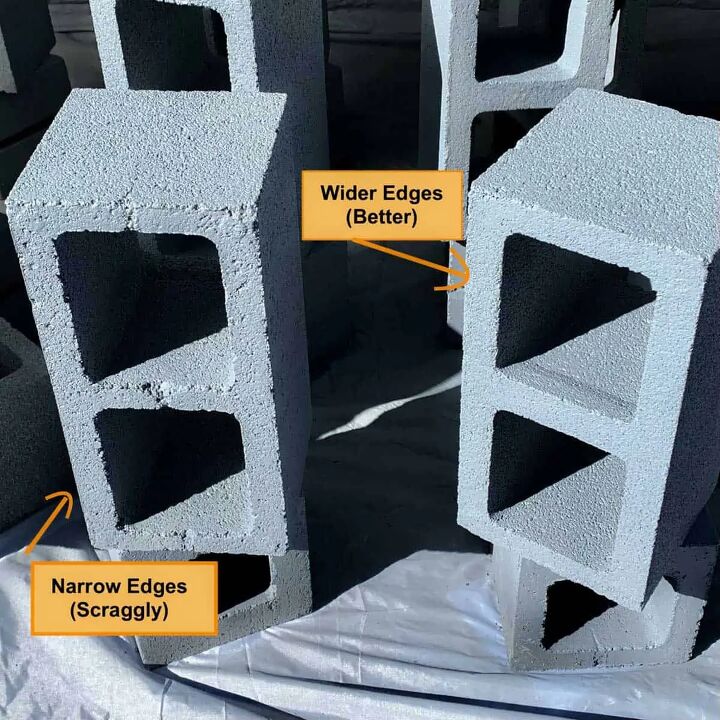ADVERTISEMENT
Materials Note:
- You don’t need pressure-treated wood unless you aren’t painting the cinder blocks. You will need pressure-treated 4x4s if you don’t paint the blocks, to help delay rotting. I used kiln-dried Douglas fir.
- If you are painting them, pressure-treated isn’t necessary since they are going to be in contact with the ground or constant moisture and could take weeks to dry out enough to be ready for staining.
- Also, you don’t need a sprayer. A sprayer saves time, but also wastes paint. You can use a roller or brush. I have found that the combination of both helps- you’ll need the brush to get inside the holes.
- Just in case you have a very specific space you need to accommodate for a standard cinder block is listed at 16x8x8, but will actually measure 15 ⅝” x 7 ⅝” x 7 ⅝”. The interior holes are a minimum of 5×5” and your 4×4’s will be about 3 ½”x 3 ½”.
- For cleaning, a power washer is ideal, but if you don’t have one, just use a bucket and nylon scrub brush.
- Standard cinder blocks are made to be stacked horizontally. Each side is a little different around the hole openings.
- One side has longer holes and thinner edges and the other side has shorter openings and thicker, cleaner edges. I consider this to be the better looking side.
- Aesthetically you’ll want to note this when assembling the bench, and I will reference these edges in the steps below.

ADVERTISEMENT